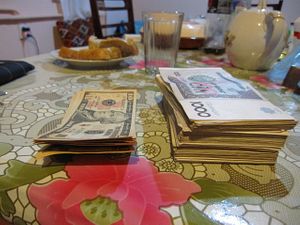From July 17-24, a team from the International Monetary Fund visited Uzbekistan. The concluding statement from the visit — when read next to the last such statement after a similar mission in 2013 — helps bolster the growing sense that, if little else, Uzbek authorities have become more open in their discussions.
On the surface the two statements (2013 and 2017) are similar in tone. The IMF doesn’t take up issues of domestic politics and although does make critical comments about economic issues, they are very clinical. It’s clear that many of the recommendations suggested in the 2013 statement were subsequently ignored. For example, the issue of economic statistics and consumer price index measurement were both mentioned in the 2013 statement. The mission noted that “[r]ecent progress with strengthening monetary and fiscal statistics is welcome,” but did not specify what that meant. It went on to encourage Uzbekistan to open its data via a country page in the IMF’s International Financial Statistics database and participate in the enhanced General Data Dissemination System.
Four years later, Uzbekistan’s data page remains blank and it doesn’t participate in the e-GDDS. It may seem trivial, but this is a manifestation of a lack of transparency. The IMF and others have to make economic assessments (and therefore reform recommendations) blindly, to be blunt.
The 2017 statement, in contrast on this issue, notes that Tashkent has declared its intention to join the e-GDDS: “The mission welcomed the authorities’ determination to work toward improving the quality and transparency of economic statistics.”
Of course, such an opening of the books may never happen, but the 2017 statement includes more specificity about pace of reforms and ranking of priorities.
The 2013 statement sources data on annual inflation using an “an alternative consumer price index (CPI) measurement by Fund staff.” It does not, however, mention why an alternative was required. The 2017 statement says “The authorities’ decision to adopt a new CPI to measure inflation, starting in 2018, should already help improve the quality of a key statistical indicator.”
Better statistics, more openly arrived at, will improve the quality of cooperation between Uzbekistan and the IMF.
The 2017 statement also highlights what may be a big win for the IMF if it comes to fruition: “The mission especially welcomed the authorities’ plan to frontload reforms of the foreign exchange system.”
Uzbekistan maintains heavy controls on foreign exchanges. Export.gov, a U.S. government website produced by the U.S. Department of Commerce’s International Trade Administration, describes the convoluted web foreign business must navigate:
There are two legal exchange rates for the [som]: the commercial (wire-transfer) rate, and the exchange booth rate. Although the government committed itself, in theory, to the provisions of the IMF’s Article VIII regarding currency convertibility for current operations, in practice multiple restrictions remain in place. All legal entities, including those with foreign investments, must receive special permission from the Central Bank to access foreign currency… nearly every business in Uzbekistan that seeks conversion suffers from irregular and insufficient conversion access.
There may be two legal exchange rates, but there’s also the black market rate. Some suggest that the difference may be so wide that “the Uzbek som may only be half as valuable as the official rate claims.”
In practice, the system plays out as Reuters described recently. Uzbekistan “requires exporters to sell a quarter of their foreign currency revenue at the official rate, about 4,000 soms per dollar,” but importers “can only buy foreign currency on a separate, bourse market where they pay about 9,000 per dollar, although the rate is not officially reported.”
“The third, black market rate, mostly used by individuals, values the som at about 8,400,” Reuters said.
Sources also told Reuters that in July a limited number of banks and companies were able to trade foreign currency at the market rate, a pilot program of full convertibility.
The IMF views the moment as ripe for reform. “Given Uzbekistan’s ample foreign exchange reserves, the reform can be implemented from a position of strength,” the recent statement said after noting that unifying exchange rates and allowing market-based allocation of foreign exchange resources “would allow the Central Bank of Uzbekistan (CBU) to pivot to a stability-oriented monetary policy capable of effectively controlling inflation.” Such reforms would contribute to job growth, external competitiveness, and attract foreign direct investment (FDI).
Currency reform isn’t the end, but the beginning of serious action on Tashkent’s part to not just right but modernize its financial systems. Next in line would be restructuring state-owned enterprises and state-controlled banks, and efforts to remove other bottlenecks to international trade and FDI, including streamlining laws, regulations, and confronting counter-productive practices that have made investing in Uzbekistan a tricky, frustrating, and costly affair.

































